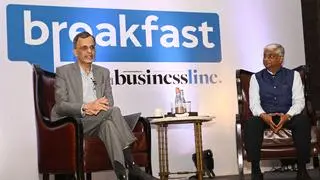Finance Ministry is considering more measures to curb the malice of fake invoices under Goods & Services Tax (GST). Tax sleuths have unearthed around 60 bogus firms recently in the National Capital Region alone involved in issuance of fake invoices over ₹800 crore.
As per Section 132 of CGST Act 2017, issuance of an invoice or bill without supply of goods or services and wrongful availing or utilization of Input Tax Credit is a cognizable and non-bailable offence if the amount is over ₹5 crore. The law prescribes a registered person to declare his supply in return form, GSTR 1 and accordingly pay his tax liability with the filing of return form GSTR 3B. This helps the recipient to avail input tax credit (ITC) on supplies declared by his suppliers in their GSTR-1 and in respect of which tax has been paid.
Move to curb fake invoices
The latest move to curb the menace of fake invoices was implemented from January 1 this year, when it was said that if a monthly filer has not filed the GSTR-3B for the preceding month, then such a taxpayer will not be allowed to file the GSTR-1 for the subsequent month, till the GSTR-3B for the preceding month is filed. For monthly fliers, GSTR 1 and GSTR 3B for the previous months need to be filed by 11th and 20th day of successive months.
Now, the indication is that the effort is to initiate the action within the month itself, i.e., after due date for GSTR 3B is over. This indication was given by Revenue Secretary Tarun Bajaj in a press conference recently when he was responding to question in curbing fake invoices. He signaled that after measure to block sequential filing, work is in progress to act much faster and details of that action will be presented soon.
‘Relying on data analytics’
Experts see real time action with the help of technology. Harpreet Singh, Partner with KPMG in India says: “The tax authorities are relying more and more on data analytics and tax technology to ensure compliance and initiate proceedings on real time basis. With data analytics, handy dashboards are now available with a click of a button on computers and mobile phones of officers, which can help them analyze trends and identify exceptions to take immediate action.”
Samir Kapadia, Partner - Indirect Tax, Nangia Andersen LLP, said that blocking the facility to upload GSTR-1 and GSTR-3B is one more measure in this direction. But, he does not think it is a silver bullet because, factually if anyone needs to issue a fake invoice he doesn’t need to upload any returns, all he needs is someone else’s GSTIN details. He can continue to issue fake invoices irrespective of the fact that his facility to upload returns is blocked. Furthermore, experience under the VAT regime has shown that this tool was more disruptive rather than being effective.
“Consequently, adequate safeguards are required from the government to ensure that genuine business activities are not disrupted due to short delays or inadvertent omissions in uploading returns and habitual defaulters are taken to task. Apart from this, the Government should make use of the new AIS report coupled with the big data tools in identifying trends and instances and use its existing powers such assessment of non-filers and auto recovery, penalizing and prosecuting defaulters and persons abetting them. Steps in this direction demonstrate that there is no escape for such defaulters,” he said.








Comments
Comments have to be in English, and in full sentences. They cannot be abusive or personal. Please abide by our community guidelines for posting your comments.
We have migrated to a new commenting platform. If you are already a registered user of TheHindu Businessline and logged in, you may continue to engage with our articles. If you do not have an account please register and login to post comments. Users can access their older comments by logging into their accounts on Vuukle.